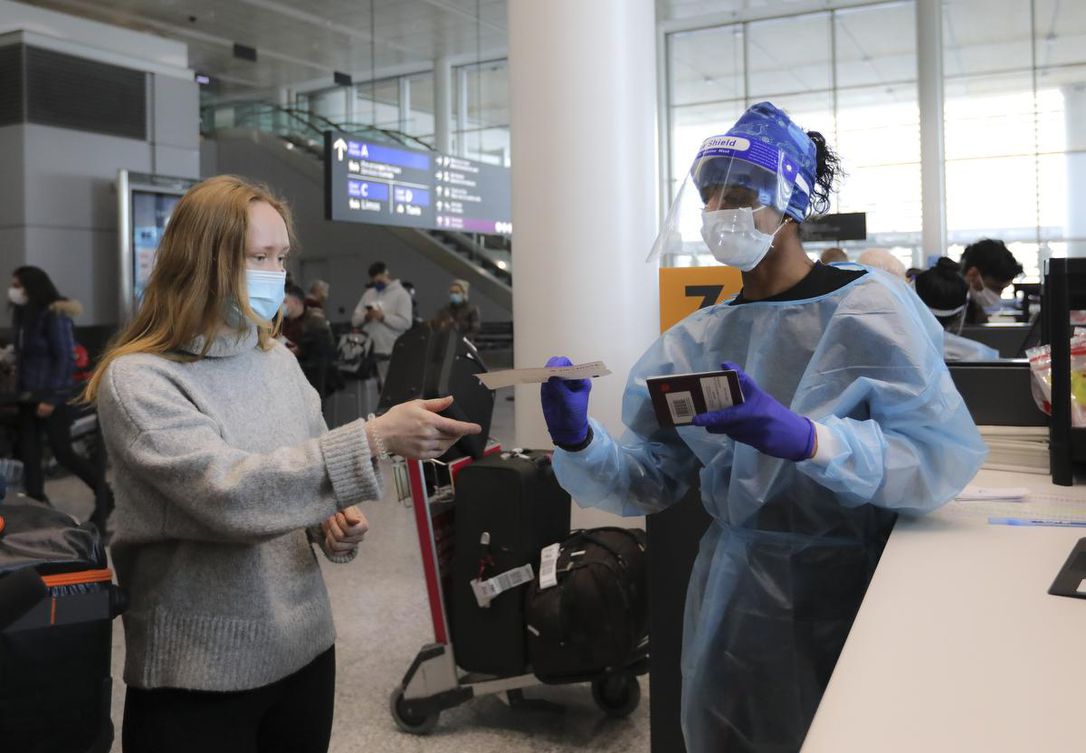February 2, 2021, Toronto Star – Airlines push to add rapid testing at airports — but shorten quarantines

https://www.thestar.com/business/2021/02/02/covid-testing-cant-fix-airline-woes-analysts-say.html
In an airline industry hammered by COVID-19, even the smallest sliver of good news is welcome these days.
But the introduction of mandatory testing for international arrivals at Pearson International Airport this week is a mixed blessing, say airlines and air industry analysts.
On the one hand, it raises the possibility of the gradual return of passengers, thanks to increased safety measures. On the other, they say, the testing isn’t fast or frequent enough, airlines still don’t have a financial aid package from the federal government, and quarantines are still longer than needed.
“Airlines have been pushing for arrivals testing since last March. But there needs to be a recovery plan, and that includes liquidity support, and a way to get customers back in the air based on science and safety. Rapid antigen testing needs to be a part of that,” said Mike McNaney, president of the National Airlines Council of Canada, a lobby group representing major airlines including Air Canada, and WestJet.
“We have said from the outset that a combination of testing and shorter quarantines would be much more effective in managing COVID-19 and protecting communities than 14-day quarantines and other blanket travel restrictions for everyone,” said Air Canada spokesperson Peter Fitzpatrick. He added that a testing trial run at Pearson last fall by McMaster Health Sciences supported the airline’s argument. A testing program at Calgary International Airport has led to similar conclusions, said WestJet spokesperson Morgan Bell.
On Monday, international passengers arriving at Pearson began getting tested using a polymerase chain reaction (PCR) test, mandated by the Ontario government last week. Passengers must self-quarantine for 14 days. (Under federal rules also introduced last week but not yet in force, the first three days of quarantine must be spent in a designated hotel, at the traveller’s expense).
While the PCR tests are considered the gold standard of COVID diagnostics because of their 95 per cent accuracy, results typically take two to three days to arrive from labs. Rapid antigen screening results, while less accurate (with false negatives up to 30 per cent of the time), are ready in as little as 15 minutes.
Both kinds are needed, say McNaney and longtime air industry analyst Fred Lazar.
“Do a rapid antigen test and a PCR test at the airport. If someone’s negative on the rapid test, let them quarantine at home. Then if the PCR test comes back negative, wait a few more days, then do a rapid test again,” suggested Lazar, a professor at York University’s Schulich School of Business.
That would mean passengers could go home and quarantine safely, without having to spend up to $2,000 on the designated quarantine hotel, Lazar argued. That kind of cost means passengers would be far more tempted not to travel in the first place.
“I suspect the ultimate goal was to stop what little international air travel there was left. But that would’ve been a lot tougher to do directly,” said Lazar.
Indeed, on the first full day of mandatory testing Monday, the contractor hired by the Ontario government, Switch Health, had to test just 1,600 passengers. In other words, enough people to more or less fill four Boeing 747s. (A Switch spokesperson said the company would also be able to perform antigen tests if asked.)
Last Thursday, in announcing mandatory testing and hotel quarantines, Prime Minister Justin Trudeau said the federal government “has committed to work with the major airlines on the future relationship between testing and quarantine requirements.”
Airlines are “bleeding money,” said Lazar, who estimates WestJet is burning through $200 million or so in cash per month, and Air Canada “hundreds of millions.”
Insolvency and restructuring aren’t out of the question, depending upon how much longer COVID-related travel restrictions — both domestic and international — remain in place, Lazar said.
“At a certain point, if this keeps going, they’re both going to end up needing to reorganize under the CCAA,” said Lazar, referring to the Companies’ Creditors Arrangement Act.
While not referring to the amount of cash airlines are spending each month, McNaney acknowledged the grim state of the industry.
“Let’s look at the bigger picture. Airlines have already cut roughly 90 per cent of their capacity. And this virus is going to be with us for a while,” said McNaney. “There are tens of thousands of jobs in the airline industry, and hundreds of thousands of jobs affected in the broader economy, and supply chain if we don’t get this right.”

